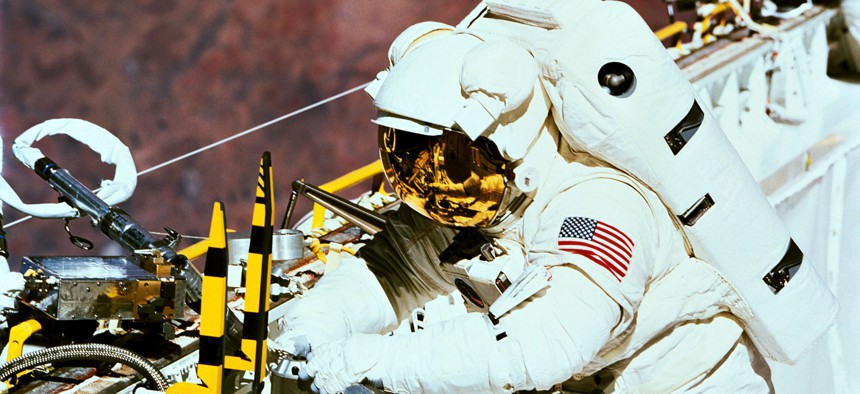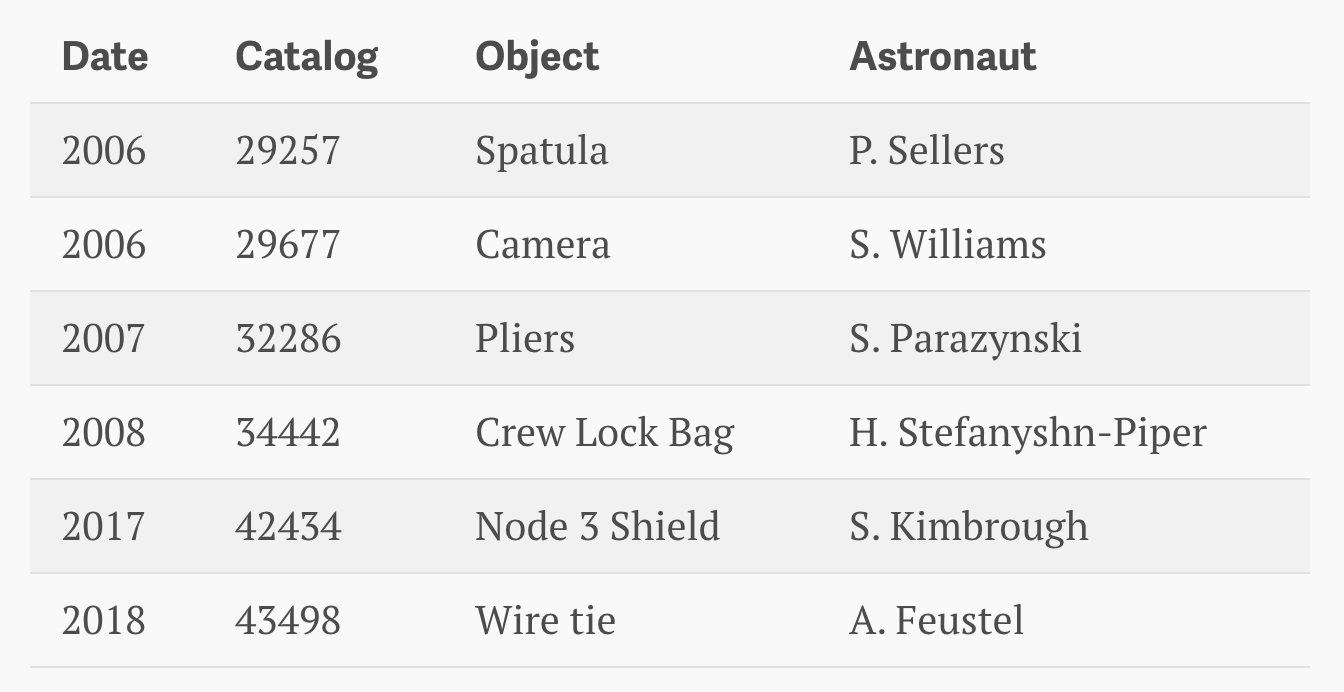
NASA file photo
Excerpt from audio recordings of Apollo 17 astronauts Gene Cernan and Harrison Schmitt during their first moonwalk in 1972:
123:42:22 Schmitt: Okay. [Pause] I didn’t mean to drop that, but I did.
123:42:31 Cernan: Yeah, we got to keep from dropping everything. I’ll tell you, the big lesson today…
123:42:35 Schmitt: [Garbled]
123:42:36 Cernan: Dust, I guess.
123:42:38 Schmitt: The big lesson is that it’s going to get dropped if your hands get tired.

To get a human being into space (alive) you need to wrap them in a pressurized cocoon of air so they can breathe without boiling.
Perhaps the most difficult part of spacesuit design is the glove, where engineers must create a design rigid enough to maintain pressure, yet flexible enough to bend through the full range of motion in the fingers and the wrist. Naturally, they don’t succeed—the glove used by NASA astronauts working in spacesuits today limits them to about 20% of their full range of motion, according to Ted Southern, a spacesuit designer who works with the agency.

This makes working with these gloves exhausting, and dropping stuff inevitable.
“You do almost all of your work with your hands,” says Scott Wray, who works at NASA and helps astronauts plan and execute space walks on the International Space Station. Unlike lunar expeditions, where astronauts could perambulate around on foot, today’s space workers use their hands to navigate the ISS even as they work. This can present a problem, because when you drop something in orbit, it doesn’t fall—but it can quickly drift out of reach.
“If I drop a hammer on a space walk, ninety minutes later that hammer may collide with me or the space station, causing some damage,” Wray says, referencing the time it takes the space lab to orbit the earth at more than 17,500 miles per hour. “So it’s a pretty serious deal. If [astronauts] drop something, we want them to report the mass, the velocity, the direction of travel, the dimensions of the tool… we’ve got a group here of experts who work with DOD and track those objects in orbit.”
Whatever astronauts lose control of in space becomes its own satellite. Astrophysicist Jonathan McDowell, who maintains databases of launches and satellites in orbit, has recorded the following dropped objects that have been classified as satellites.

Yes, that is a spatula in 2006. After a damaged heat shield led the Space Shuttle Columbia to break apart on re-entry, NASA experimented with ways to repair broken thermal tiles while in orbit. That included tests that simulated injecting various “goos” into the tile and spreading them with a kind of spatula. “When [Sellers] came home after the mission, he had a lot of spatulas waiting for him in his office from his astronaut co-workers,” Wray recalls.
In a June 2018 spacewalk, astronaut Drew Feustel lost a wire-tie, used to secure bundles of wires outside the station, while installing new cameras on the outside of the station.
You can see Feustel and colleague Ricky Arnold at work in this video. You can see them checking their gloves and helmets, securing wire bundles, and very carefully moving their tools across the station. (You don’t see them losing the wire-tie.)
Naturally, NASA spends a lot of time working on not dropping things. Every tool is attached to a tether that should be linked to a suit or the station at all times: Wray says astronauts learn a protocol known as “make before you break,” to remember to hook each tool down before they lose contact with it. But over the course of a six-hour spacewalk, concentration can lapse—especially when all those tethers are floating in micro-gravity and bumping into each other in your tool box.
“I also come up with the most efficient tool configuration,” Wray says. “The best way to reduce the risk of losing a tool is to reduce the number of tools on a spacewalk, but you never know if you’re going to need an extra pry bar or torque wrench in case you encounter something off-nominal.”
The good news when it comes to lost objects in low-earth orbit, about 250 miles (402 kilometers) above the earth, is that most soon drift into the atmosphere below and burn up. The most important thing is avoiding near-term damage to the space station.
“Ideally if a crew member were to drop something, we’d want it to be heading nadir—towards the earth—and in the aft direction, so its falling orbit would be lower than the space station,” Wray says. “If it went zenith, in a way, you’re sort of pushing it into a higher orbit and possibly a higher velocity, its next orbit could collide.”
Luckily, the ISS is usually equipped to boost its altitude thanks to rocket engines on the Russian module, which it does to maintain altitude and dodge orbital debris, whether created by astronauts or anyone else.







